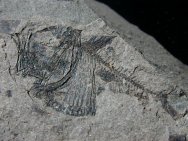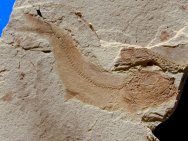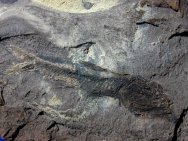The Carpathian Mountains or Carpathians for short are a huge
range of mountains forming an arc of roughly 1,500 km across
Central and Eastern Europe. As such, they form the largest mountain
range in Europe. The mountain ranges stretch in an arc from
the Czech Republic in the northwest to Slovakia, Ukraine and
Romania in the east, to the Iron Danube River between Romania
and Serbia in the south. The Carpathian chain is usually divided
into three major parts: the Western Carpathians (Czech Republic,
Poland, Slovakia, Hungary), the Eastern Carpathians (Southeastern
Poland, Eastern Slovakia, Ukraine, Romania) and the Southern
Carpathians, Romania and Serbia. In this extensive area, there
are numerous fossil sites representing different geological
ages.
What
is said to be the world’s most inaccessible human fossil
site is in the foothills of Romania’s Carpathian Mountains.
From data gained, scientists hope to wrap up their case for
answers to some of the most hotly debated questions  about
early humans: "Did early modern humans make love or war
with Neanderthals"? Were Neanderthals intellectually inferior
to us? Some anthropologists believe Neandertalswere were not
inferior and interbred with us. Other anthropologists examining
the fossils think not.
about
early humans: "Did early modern humans make love or war
with Neanderthals"? Were Neanderthals intellectually inferior
to us? Some anthropologists believe Neandertalswere were not
inferior and interbred with us. Other anthropologists examining
the fossils think not.
 Near
Rowe, Poland, exceptionally preserved Oligocene fish fossils
are found, some of which are shown below.
Near
Rowe, Poland, exceptionally preserved Oligocene fish fossils
are found, some of which are shown below.
The
Ukrainian Carpathian Mountains lie on the border of the East
European Platform and the Mediterranean Geosynclinal Province.
Their geological structure is the result of successive periods
of sedimentation, orogenesis, and denudation. The basic pattern
in the structure of the Ukrainian Carpathians is their distinct
division into longitudinal structural-lithological zones. The
mountains were principally formed in the Tertiary period and,
therefore, Cretaceous and Lower Tertiary rock formations are
most widespread in the Carpathians. The Carpathian Mountains
were formed during the Alpine orogeny in the Tertiary period.
Prior to that, from the end of the Paleozoic to the Cretaceous
period, mountains of the Hercynian orogeny (late Paleozoic era),
known as the Protocarpathians, existed in their place. In the
Cretaceous and Lower Tertiary periods the Protocarpathians were
destroyed and were replaced by geosynclinal depressions filled
with seawaters.
|
| |
|
|
|
| |
Clupea
sp.
Class Actinopterygii
Oligocene
Rowe, Carpathian Mountains, Poland |
|
|





